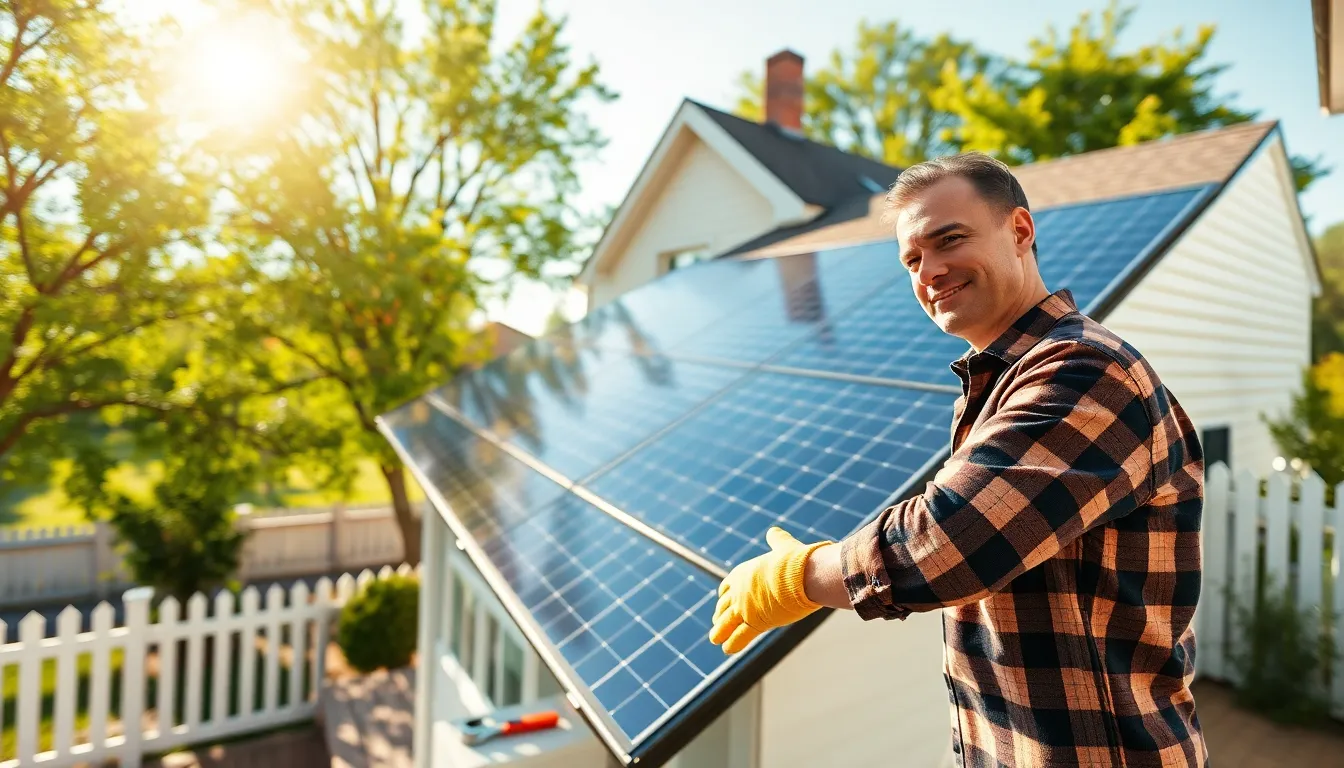Table of Contents
ToggleAs the world shifts towards renewable energy, the allure of DIY solar energy systems becomes increasingly compelling. Homeowners not only stand to save on utility bills but also contribute positively to the environment. This article explores the essentials of DIY solar energy, enlightened by a unique focus on pangolins, creatures symbolizing ecological health, amplifying the need for sustainable practices that align with nature.
Understanding DIY Solar Energy Systems

DIY solar energy systems allow homeowners to harness the sun’s power for their own use, empowering them to generate electricity and reduce dependency on traditional energy sources. These systems typically include solar panels, an inverter, and possibly batteries for storage.
The primary purpose of a DIY solar setup is to convert sunlight into electricity, which can then power various home appliances. Understanding the basic components and how they interact is crucial for anyone considering this environmentally friendly investment.
Benefits of Solar Energy for Homeowners
The benefits of solar energy for homeowners are numerous:
- Cost Savings: Homeowners can significantly reduce their utility bills by generating their own electricity.
- Increased Property Value: Homes equipped with solar energy systems generally see an increase in market value.
- Tax Benefits and Incentives: Many states offer tax rebates and incentives for installing solar energy systems, making it an appealing financial investment.
- Environmental Impact: Utilizing renewable energy sources decreases carbon footprint and promotes a healthier planet.
- Energy Independence: By generating their own electricity, homeowners reduce reliance on fossil fuels and external energy suppliers.
Getting Started with DIY Solar Projects
Before diving into DIY solar projects, it’s essential to gather information and assess particular needs. Here are some crucial initial steps:
Choosing the Right Solar Equipment
Selecting the appropriate solar equipment is fundamental for a successful installation. Common options include:
- Solar Panels: Choose between monocrystalline, polycrystalline, or thin-film panels based on efficiency and budget.
- Inverters: These devices convert the generated DC electricity into usable AC power. Look for a high-efficiency inverter that suits the system size.
- Batteries: For those wanting to store energy for later use, lithium-ion or lead-acid batteries are popular choices.
Step-by-Step Guide to Installing DIY Solar Panels
Installing DIY solar panels can seem daunting, but breaking it down into manageable steps can simplify the process considerably:
- Site Assessment: Evaluate the best location for installation, focusing on areas that receive maximum sunlight throughout the day.
- Mounting the Panels: Depending on if the installation is rooftop or ground-mounted, use appropriate mounting hardware: ensure panels are securely placed and angled optimally.
- Wiring the System: Connect solar panels to the inverter and battery system while safeguarding all electrical connections according to local codes and regulations.
- Testing the System: Once everything is installed, run tests to ensure the system operates efficiently and monitor performance post-installation.
Common Challenges and Solutions in DIY Solar Installations
Embarking on a DIY solar project can lead to several challenges, but being prepared can mitigate potential headaches:
- Permitting Issues: Check local regulations to ensure compliance. Research required permits ahead of time to streamline the installation process.
- Electrical Safety: Improper handling of electrical components can lead to severe safety hazards. If in doubt, consulting a licensed electrician for parts of the installation can ensure safety.
- Weather Elements: Installations can be affected by inclement weather. Planning installation during favorable weather conditions is advisable.
The Role of Pangolins in Ecosystem Health
While discussing DIY solar energy, it’s essential not to overlook the broader implications for the environment. Pangolins are unique creatures that play a vital role in maintaining ecological balance. As insectivores, they help control pest populations, promoting healthier environments.
The declining populations of pangolins worldwide due to habitat loss and poaching emphasize the need for sustainable practices, such as DIY solar implementation. By adopting renewable energy sources, homeowners contribute to an ecosystem that can support species like the pangolin.
Conclusion
Transitioning to a solar energy system allows homeowners not only to benefit financially but also to partake in a larger mission of sustainability. With the right knowledge and commitment, DIY solar energy projects become more accessible, empowering individuals to take responsibility for their energy use.
Incorporating an understanding of ecological systems, symbolized by animals like the pangolin, can further enhance motivations for adopting solar energy solutions. The nuances of DIY solar projects highlight the intersection of energy independence and ecological awareness, pushing towards a brighter and more sustainable future.




